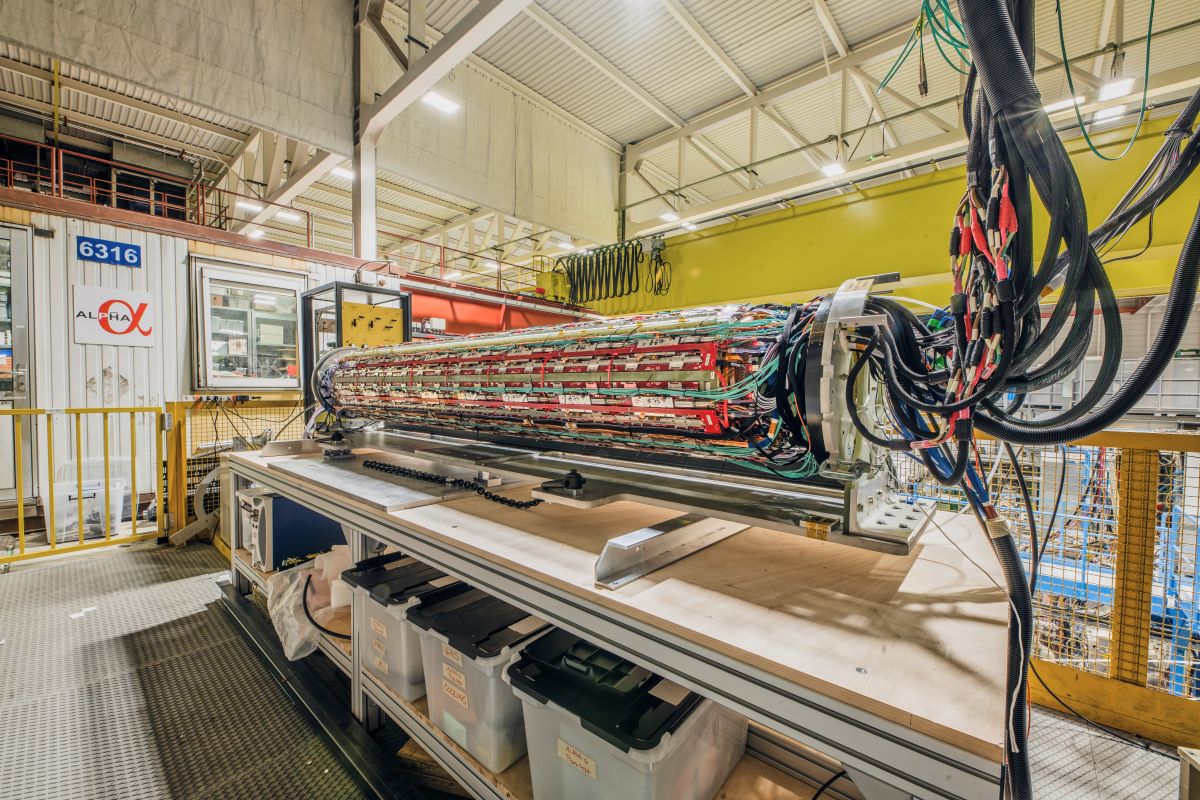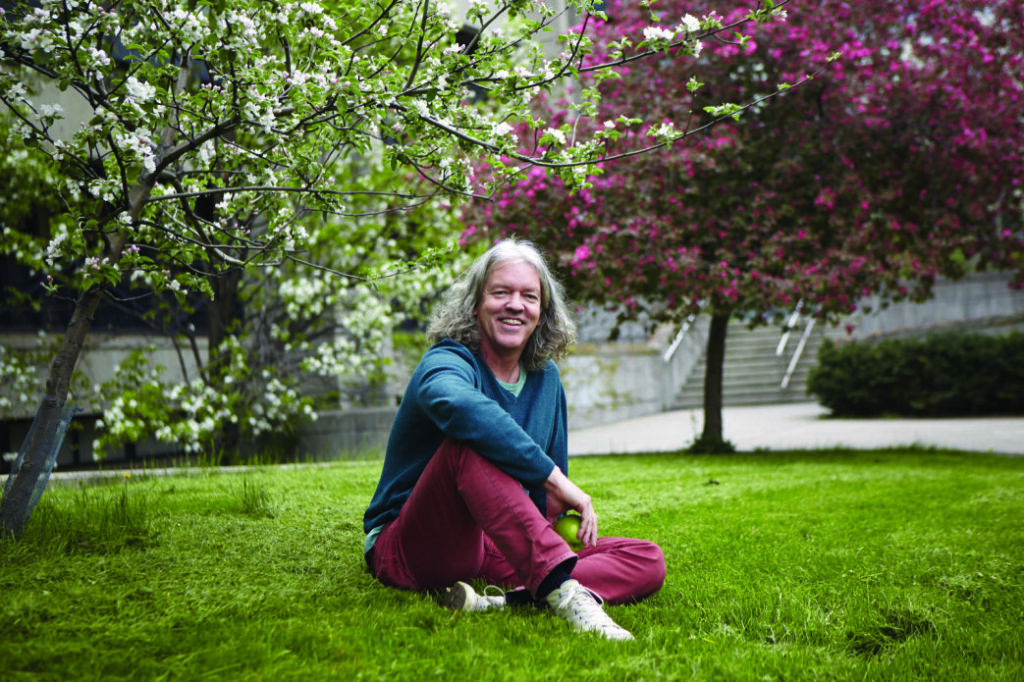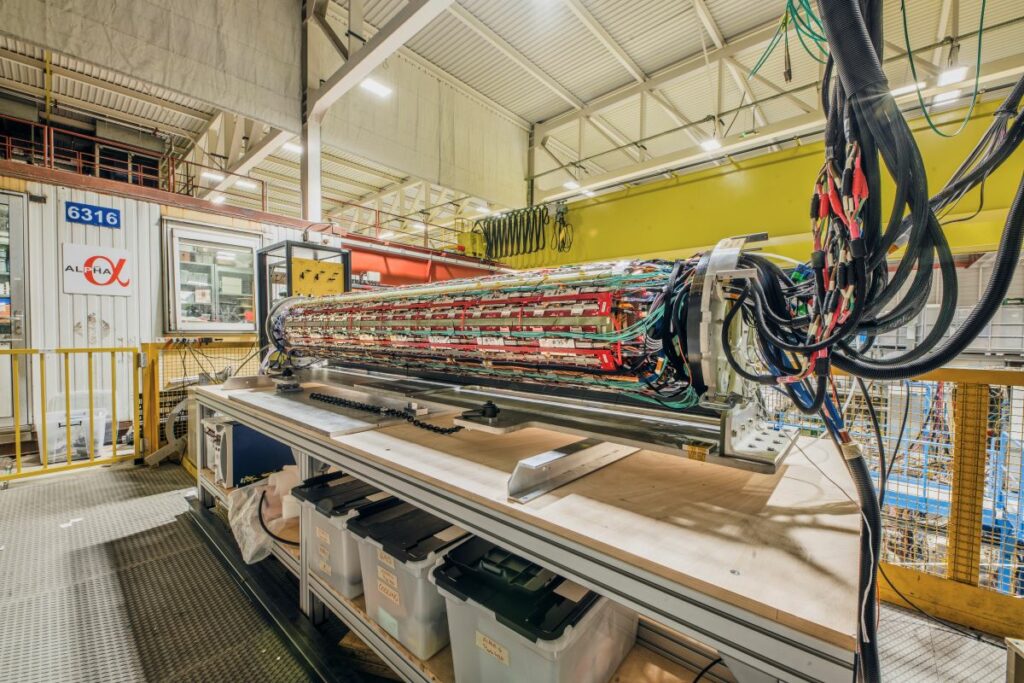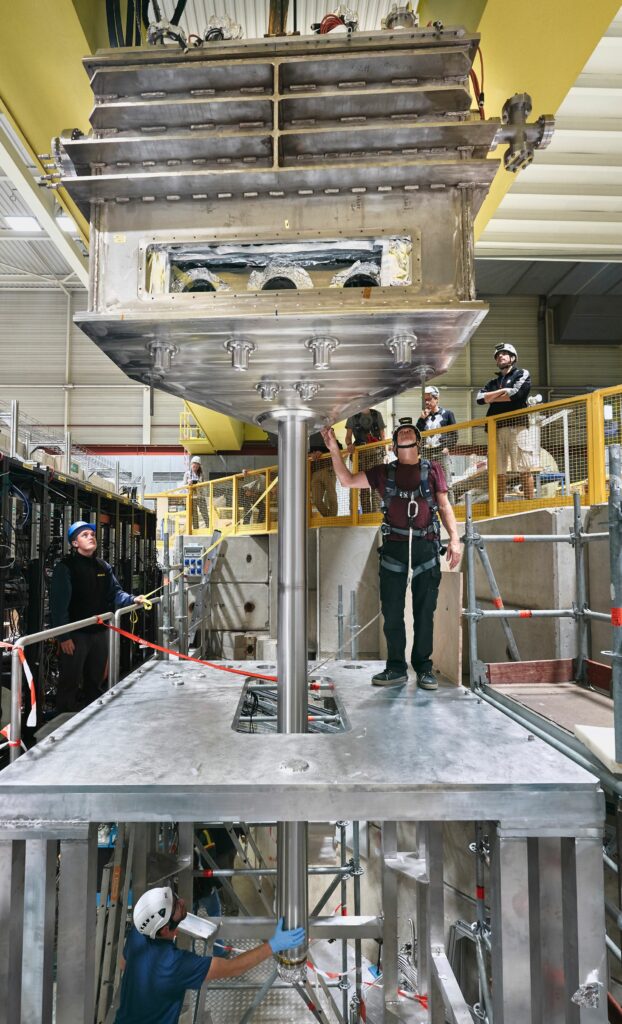
Does an antimatter apple fall up or down? Scientists solve longstanding mystery
York University is part of an international collaboration that has resolved the enigma of whether antimatter follows the rules of gravity
TORONTO, Sept. 27, 2023 – As Isaac Newton observed, an apple falls from the tree and hits the ground. But what would an antimatter apple do? That was the question an international collaboration with York University Professor Emeritus Scott Menary set out to answer.
Ultimately, the team is testing Albert Einstein’s General Theory of Relativity, one of the twin pillars of 20th century physics alongside quantum mechanics. The idea was to see if General Relativity also held true for antimatter or, in this specific case, antihydrogen.
What they found is yes, antihydrogen, like hydrogen, falls down, not up.

“The result is a technical tour de force given the difficulty of measuring the effect of gravity – a force much weaker than most people realize – on just a small collection of antihydrogen atoms,” says York University Professor Emeritus Scott Menary of the Faculty of Science. “If Newton had observed an anti-apple instead of an apple, he would have seen nothing unusual, as it turns out, an anti-apple would also fall down.”
The antimatter gravity measurement was carried out by the Antihydrogen Laser Physics Apparatus (ALPHA) collaboration using the new ALPHA-g apparatus, now in operation at CERN, the European Organization for Nuclear Research. Menary was co-project manager of construction for ALPHA-g’s radial Time Projection Chamber (rTPC), which he also helped design. The rTPC was one of two new detectors used in the experiment to observe where the antihydrogen annihilated with matter in the apparatus.
The experiment works by first creating a sample of antihydrogen atoms and trapping (holding) them in an extraordinarily cold magnetic bottle. ALPHA-g physicists then released the antihydrogen by varying magnetic fields so as to witness and measure its gravitational behaviour. It was the first direct freefall measurement of the force of gravity on antimatter.
But Menary points out that they aren’t finished. “We are upgrading our apparatus, including using laser cooling, to improve the precision of our measurement.”

ALPHA has previously carried out precise tests of the charge and colour of antihydrogen, which to-date constitutes the sternest test of the symmetries of the quantum mechanical description of nature. These results combined with the new measurement on the effect of gravity on antimatter relate to one of the central questions of modern physics – what happened to all of the antimatter created in the Big Bang?
“Right now, we don’t have an explanation about where all the antimatter in the universe is. To find a solution for this conundrum, what we do is test the element of physics of antimatter to see if we can find an inconsistency. In this case, we tested to see if the gravitational characteristics of antihydrogen mirror those of hydrogen, which is significant because it’s never been done before,” says physics Professor Robert Thompson, associate vice-president (research) at the University of Calgary and principal investigator of the ALPHA-g Canada Foundation for Innovation Project.

ALPHA-g is an international partnership of research institutions including, on the Canadian side, York University, the University of Calgary, Simon Fraser University, TRIUMF, the University of British Columbia, and the British Columbia Institute of Technology as well as post-secondary institutions and research institutes in Europe, the United Kingdom, the United States, Israel and Brazil.
"This milestone is a culmination of nearly 20 years of dedication and teamwork. The contributions of the members of ALPHA-Canada were critical to our success,” said Dr. Makoto C. Fujiwara, senior scientist, TRIUMF, and ALPHA-Canada spokesperson. "ALPHA-Canada is a pan-Canadian collaboration made up of a diverse group of students, postdoctoral scholars, academics and staff members, each who played a vital role in this project."
The paper, Observation of the effect of gravity on the motion of antimatter, is published today in the journal Nature.
This is the first major result from the ALPHA-g apparatus, which was funded through the Canada Foundation for Innovation. Major contributing partners include the Government of Alberta, the British Columbia Knowledge Development Fund, the Ontario Research Fund, Carlsberg Foundation (Denmark), and UK Government funding through the University of Manchester and Swansea University.






